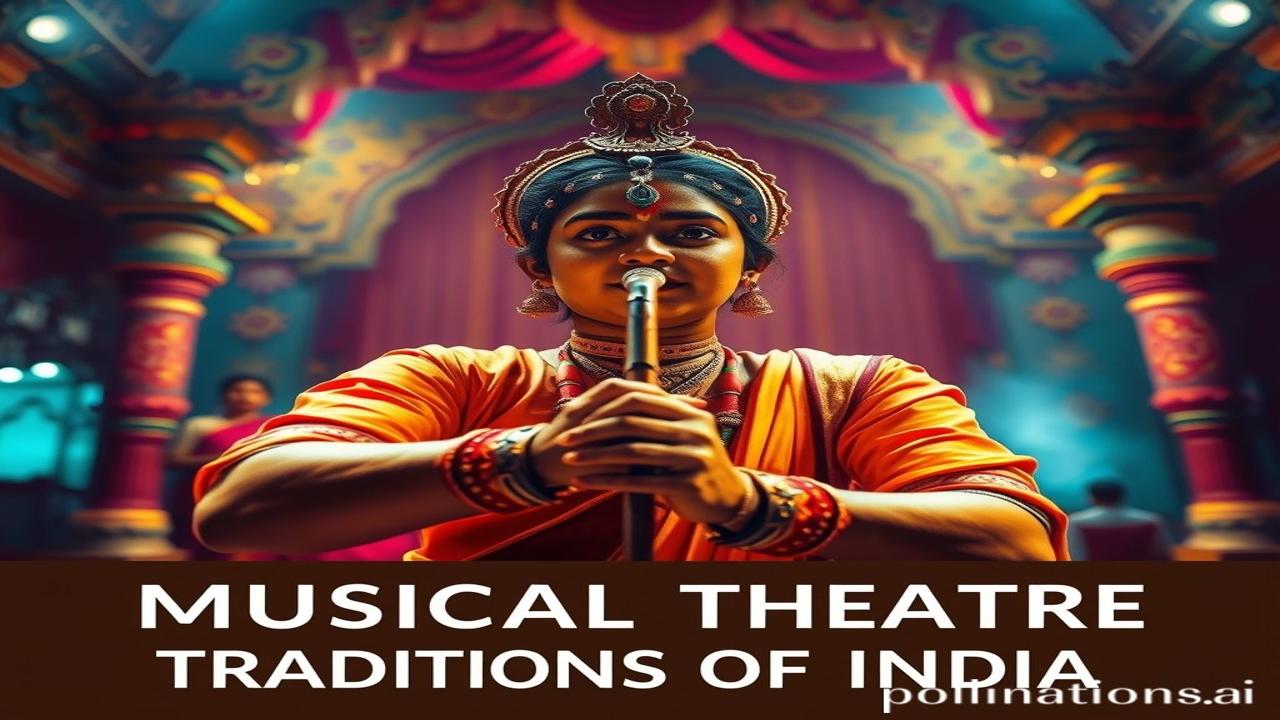Bharat Ki Sangeetmay Virasat: Unveiling the Musical Theatre Traditions of India
Kabhi socha hai, jab theatre halls mein light off hoti hai aur stage par curtains uthte hain, toh India ki kitni generations ki mehnat, kala, aur sanskriti us pal mein jee uthti hai? Woh jo ek alag hi duniya stage par ban jaati hai, uske peeche kitna lamba aur rangeen itihas hai! Let’s dive into the vibrant world of India’s musical theatre traditions.
Kya Hai Yeh Musical Theatre, Aur Kahaan Se Aaya?
Musical theatre in India isn’t just about catchy tunes and coordinated dance steps. It’s a deep-rooted art form, a rich tapestry woven with stories from our epics, folklore, and history. Think of it as a vibrant conversation between music, dance, drama, and storytelling.
This tradition has evolved over centuries, taking different forms across the country. From the Nautanki of North India to the Yakshagana of Karnataka, the Bhavai of Gujarat, and the Jatra of Bengal, each region has its unique flavour. While pinpointing an exact origin date is tricky, these forms likely began to crystallize in the medieval period, drawing from ancient ritualistic performances and storytelling traditions.
Iska importance yeh hai ki yeh sirf entertainment nahi hai; it’s a mirror reflecting our society, our beliefs, our struggles, and our joys. Yeh humari collective memory ka hissa hai, a living archive of our cultural heritage.
Zameeni Sach: Log Aur Jeevan
Imagine a village in Rajasthan, under a starlit sky. The Bhavai performance is about to begin. The lead actor, a weathered man with twinkling eyes, adjusts his pagdi (turban). The women, clad in vibrant ghagras, gather with their children. The air is thick with anticipation and the aroma of chai and jalebi.
Aur fir shuru hota hai khel. The drums beat, the harmonium sighs, and the actor launches into a tale of bravery, love, and betrayal. His voice soars, echoing through the silent night. He dances, he jokes, he weeps. He embodies the character, becoming one with the story.
“Arre wah! Kya baat hai!” someone shouts from the crowd, showering the actor with praise and blessings. This isn’t just a performance; it’s a community event, a shared experience that brings everyone together.
Or picture a bustling courtyard in Bengal during a Jatra performance. The elaborate costumes gleam under the flickering torchlight. Actors, painted in dramatic makeup, portray gods and demons, kings and queens. The dialogues are powerful, the music intense. The audience, captivated, hangs on every word, every gesture.
“Aye! Rakshas! Tera ant nishchit hai!” roars the actor playing the hero, drawing gasps and cheers from the crowd. It’s a battle between good and evil, a story of hope and redemption, played out in a spectacular theatrical display.
Dharohar Aur Pehchan: Aaj Ki Tarikh Mein
Even today, in the age of Bollywood and Netflix, these traditional forms still hold a special place in the hearts of many Indians. While they might not be as widely popular as mainstream entertainment, they continue to thrive in their respective regions, often supported by local communities and cultural organizations.
You might find glimpses of these traditions in modern theatre, dance, and even film. The use of stylized movements, expressive vocals, and mythological themes can all be traced back to these ancient forms. Yeh ek reminder hai ki humari sanskriti hamesha evolve hoti rehti hai, lekin apne roots ko kabhi nahi bhulti. It’s Bharatiyata in action – a beautiful blend of the old and the new.
Mazedar Tathya Ya Bhram-Bhanjak
Log aksar samajhte hain ki Indian musical theatre sirf religious themes par based hoti hai. Lekin asli sach yeh hai ki these forms also address social issues, political satire, and everyday life situations. For example, Nautanki often incorporates comedic elements and critiques of the prevailing social norms. So, it’s much more than just religious performances!
Drishya Aur Bhavnayein
Imagine the smell of incense filling the air during a Yakshagana performance. The rhythmic chanting of the Bhagavatha (storyteller) blends with the clanging of cymbals and the pounding of drums. The temple walls, cool and smooth to the touch, vibrate with the energy of the performance. The actors, their faces painted in bold colours, move with grace and power, their costumes shimmering in the torchlight. It’s a sensory feast, a deeply immersive experience that transports you to another world.
Antim Vichar Ya Uddharan
These musical theatre traditions are more than just entertainment; they are living embodiments of India’s rich cultural heritage. They are stories passed down through generations, voices that echo across time, and a testament to the power of art to connect us to our past and to each other.
As someone wisely said, “Kala satyam shivam sundaram hai.” (Art is truth, goodness, and beauty). Let us continue to celebrate and cherish these treasures of our heritage, ensuring that they continue to inspire and enrich our lives for generations to come.
